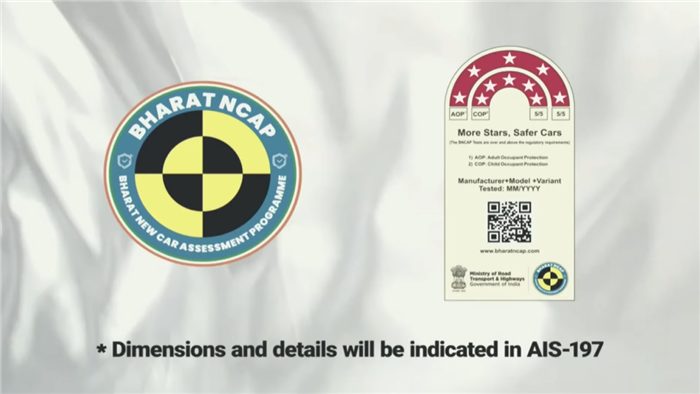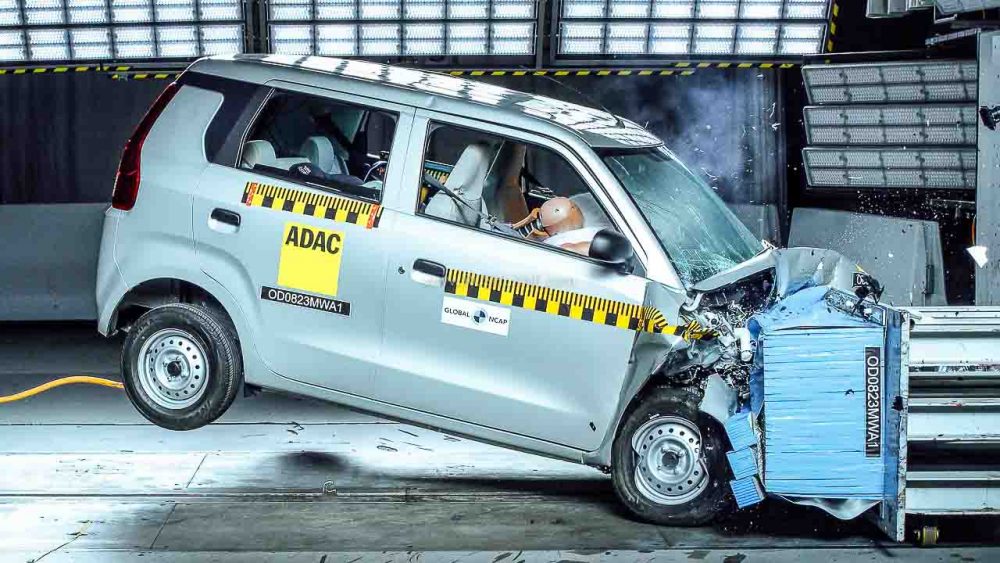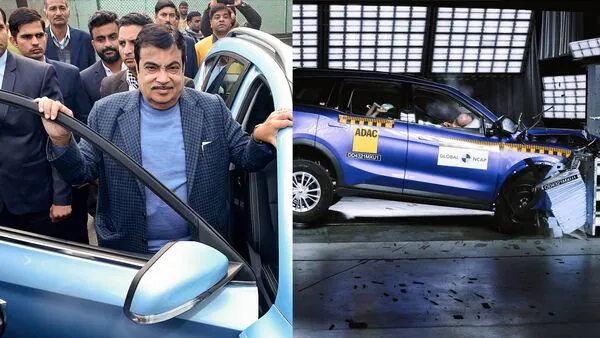India is a country characterized by its vibrant culture, diverse population, and rich heritage. Yet, there’s one aspect that has often come under scrutiny – the safety of its roads. Today, we stand at a crossroads where a significant initiative has been launched to address this concern, the Bharat New Car Assessment Programme (Bharat NCAP).

The Launch and the Vision Behind Bharat NCAP
Union Minister Nitin Gadkari introduced the Bharat NCAP with a clear vision in mind – saving lives. At the event, he emphasized, “This is the time when we have the highest priority for how we can save lives of the people, and road safety is the most important thing for that.”
This initiative is not just about creating safer vehicles. It’s about creating an environment of awareness, where consumers are empowered with knowledge about the safety standards of vehicles, and where manufacturers are incentivized to prioritize these standards.
Understanding Bharat NCAP
Bharat NCAP is a game-changer for Indian road safety. Here’s why:
Comparative Assessment: The core purpose of this program is to equip potential car buyers with a tool that allows them to assess and compare the crash safety of motor vehicles available in the market. This addresses a crucial gap that has long existed in the Indian automotive sector.
Voluntary Testing: While the initiative is voluntary for manufacturers, the fact that they can now have their cars tested as per Automotive Industry Standard (AIS) 197 indicates the government’s intent to encourage producers to step up their game.
Star Ratings: One of the primary features of the Bharat NCAP is the star rating system. Cars will be evaluated and awarded star ratings based on their performance in crash tests for both Adult Occupants (AOP) and Child Occupants (COP). These ratings will be instrumental for buyers, enabling them to discern and compare the safety standards of different vehicles.

Increased Demand & Global Competitiveness: The Indian government rightly anticipates that such a program will lead to an increased demand for safer cars, compelling manufacturers to respond proactively. This response is not just crucial for the domestic market but will also position Indian cars more favorably in global markets, enhancing the export potential.
Union Minister Nitin Gadkari succinctly captured the broader vision, stating, “With high safety standards, Indian cars will be able to compete better in the global market, increasing the export potential of the car manufacturers in India.”

Challenges and the Way Forward
While the introduction of Bharat NCAP is a commendable step, it’s essential to acknowledge the broader challenges. As Minister Gadkari mentioned, road engineering has been a consistent concern. There have been repeated errors in road engineering, and there’s an urgent need to rectify and avoid these pitfalls.
Furthermore, the program’s success will depend on cooperation, coordination, and effective communication between various stakeholders. This isn’t just about creating safer cars; it’s about building safer roads, nurturing a culture of safe driving, and instilling a sense of shared responsibility among all road users.
The government’s openness to suggestions, as expressed by Minister Gadkari, will be crucial. Incorporating feedback from car manufacturers, consumers, safety experts, and other stakeholders will ensure that the program remains dynamic and responsive to the evolving needs of the sector.
Our Take
The introduction of the Bharat NCAP marks a significant stride towards enhanced road safety in India. By emphasizing both vehicle safety and the need for improved road infrastructure, the Indian government has showcased a holistic approach to addressing the challenges of road safety.
As consumers, the ball is now in our court. We need to be proactive in making informed decisions, prioritizing safety over other features, and playing our part in creating safer roads for everyone.
For car manufacturers, the message is clear – safety isn’t just an optional feature; it’s a necessity. The global market is watching, and there’s an opportunity to not just cater to the domestic demand but also carve a niche in the international automotive scene.
In conclusion, the launch of Bharat NCAP heralds a new era for road safety in India. With collaboration, informed decisions, and a relentless pursuit of excellence, India can set a global benchmark in both vehicle safety and road infrastructure. Only time will tell how this initiative transforms the Indian roads, but the first step, undoubtedly, is a leap in the right direction.





